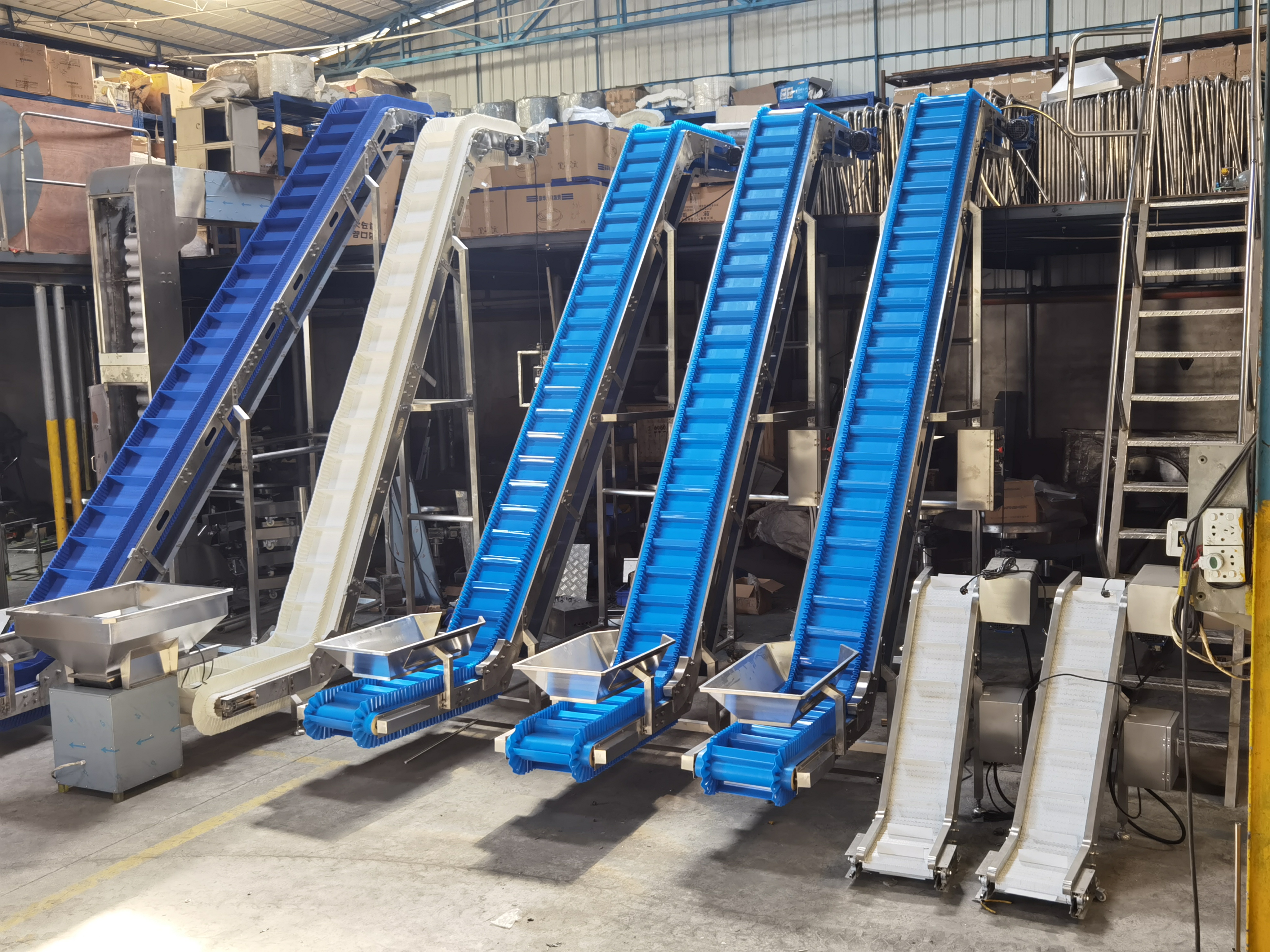The installation of the belt conveyor is generally carried out in the following stages.
1. Install the frame of the belt conveyor The installation of the frame starts from the head frame, then installs the intermediate frames of each section in sequence, and finally installs the tail frame. Before installing the frame, the centerline must be pulled along the entire length of the conveyor. Because keeping the centerline of the conveyor in a straight line is an important condition for the normal operation of the conveyor belt, when installing each section of the frame, it must be Align the center line, and at the same time build a shelf for leveling. The allowable error of the frame to the center line is ±0.1mm per meter of machine length. However, the error of the center of the frame over the entire length of the conveyor must not exceed 35mm. After all the single sections are installed and aligned, each single section can be connected.
2. Install the driving device When installing the driving device, care must be taken to make the drive shaft of the belt conveyor perpendicular to the centerline of the belt conveyor, so that the center of the width of the driving drum coincides with the centerline of the conveyor, and the axis of the reducer coincides with the drive axis parallel. At the same time, all shafts and rollers should be leveled. The horizontal error of the axis, according to the width of the conveyor, is allowed within the range of 0.5-1.5mm. While installing the driving device, tensioning devices such as tail wheels can be installed. The axis of the pulley of the tensioning device should be perpendicular to the center line of the belt conveyor.
3. Install idler rollers After the frame, transmission device and tensioning device are installed, the upper and lower idler roller racks can be installed so that the conveyor belt has a curved arc that changes direction slowly, and the distance between the roller racks in the bending section is normal. 1/2 to 1/3 of the distance between the roller frames. After the idler roller is installed, it should rotate flexibly and briskly.
4. The final alignment of the belt conveyor In order to ensure that the conveyor belt always runs on the centerline of the rollers and pulleys, the following requirements must be met when installing rollers, racks and pulleys:
1) All idlers must be arranged in rows, parallel to each other, and kept horizontal.
2) All the rollers are lined up parallel to each other.
3) The supporting structure must be straight and horizontal. For this reason, after the drive roller and idler frame are installed, the centerline and level of the conveyor should be finally aligned.
5. Then fix the rack on the foundation or floor. After the belt conveyor is fixed, feeding and unloading devices can be installed.
6. Hanging the conveyor belt When hanging the conveyor belt, spread the conveyor belt strips on the idler rollers in the unloaded section first, surround the driving roller, and then spread them on the idler rollers in the heavy-duty section. A 0.5-1.5t hand winch can be used to hang the straps. When tightening the belt for connection, the roller of the tensioning device should be moved to the limit position, and the trolley and the spiral tensioning device should be pulled towards the direction of the transmission device; while the vertical tensioning device should move the roller to the top . Before tightening the conveyor belt, the reducer and motor should be installed, and the braking device should be installed on the inclined conveyor.
7. After the belt conveyor is installed, an idling test run is required. In the idling test machine, attention should be paid to whether there is deviation during the operation of the conveyor belt, the operating temperature of the driving part, the activity of the idler during operation, the tightness of the contact between the cleaning device and the guide plate and the surface of the conveyor belt, etc. Make necessary adjustments, and the test machine with load can only be carried out after all components are normal. If a spiral tensioning device is used, the tightness should be adjusted again when the test machine is running under load.
Post time: Dec-14-2022

